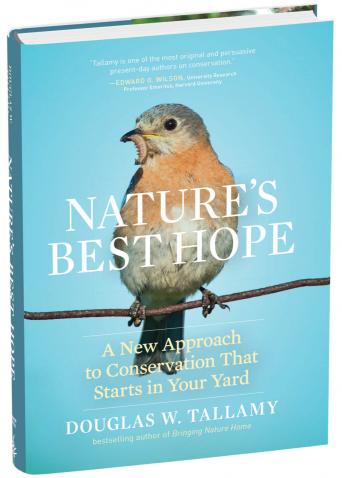
Liberate Your Lawn & Garden: It’s Up to Homeowners to Make Our Yards Native Plant Friendly
Last fall my sister-in-law called; she was excited about an elegant plant she had seen while walking on the canal trail near her home. “It would be a brilliant addition to the front yard,” she said, and she wanted to know what it was and where to get it. An artist, she described the big heart-shaped maroon leaves and the delicate, almost translucent, triple-winged seed pods cascading out from graceful arched stems. I was stumped and intrigued, so I asked her to send me a picture. She did; it was Japanese knotweed (Fallopia japonica).
“Oh god, no. You can’t plant that; it’s invasive!” I exclaimed.
“Is it really that bad?” she asked. Yes! It really is that bad.
Invasive plants are not invasive because they are foreign, ugly or vile tasting. They are invasive because there are no natural predators or pathogens to keep them in check, allowing them to overwhelm our local ecosystems.
Historically, we have admired these plants for their beauty, utility or flavor and wanted them for our own. Early settlers and plant enthusiasts imported exotic plants for comfort and/or the desire to own that which is beautiful and rare. Take the Empress or Princess Tree (Pawlonia tomentosa). Once unique, it now grows everywhere from chimney cracks, railroad and highway overpasses to the Schuylkill, Delaware and Wissahickon riverbanks. After years of this practice, we can now see the impact of our desires on local flora and fauna.
And yet, we continue this practice every day. Invasive plants such as barberry, burning bush, creeping euonymus, vinca, pachysandra, Callery pear, privet, and grass are planted daily by well-meaning landscape professionals and homeowners who don’t know the difference. As a society, we have lost our connection to the land and the invaluable ecosystem services that native habitats provide. Our emotional quest to control and decorate our yards has had a devastating impact on the health of our planet. If you know what you’re looking for, you can easily see it everywhere.
Here’s the good news: We can make educated choices about our yards.
Doug Tallamy’s new book “Nature’s Best Hope” lays out the consequences of our collective historical and present-day decisions. He shares the history and implications of transforming 40 million acres (an area the size of New England) of wild natural land to highly controlled, lawn- dominated and horticulturally constructed landscapes. He discusses the efficacy of some of our conservation policies and shares the science behind the profound impact human beings continue to have on the species with whom we share our yards.
Tallamy doesn’t just advocate for planting native plants; he illustrates how homeowners are the answer. By restoring our yards as natural conservation corridors, we can supply the critical habitat needed for local species (and humans) to survive and thrive. We citizens could together solve our climate and biodiversity crisis. It’s a book that will take you through a number of emotions — and it’s empowering.
My sister-in-law is getting a copy from me.
Sarah Endriss is an ecologic restoration design professional. She is principal of Asarum LandDesign Group located in Germantown, adjunct faculty at Jefferson University, and a restoration design consultant for WildLawn, an ecologically-aware lawn alternative.

